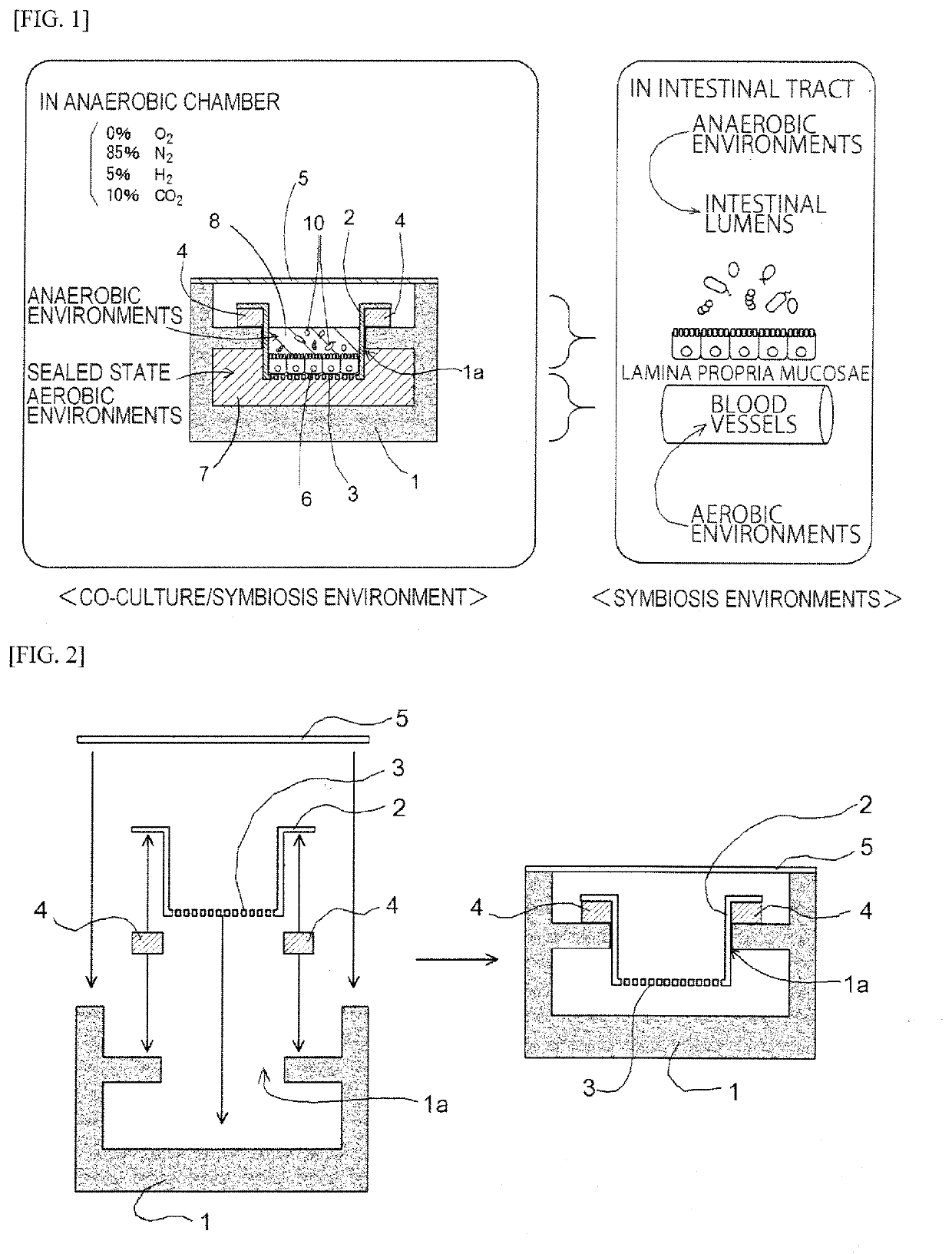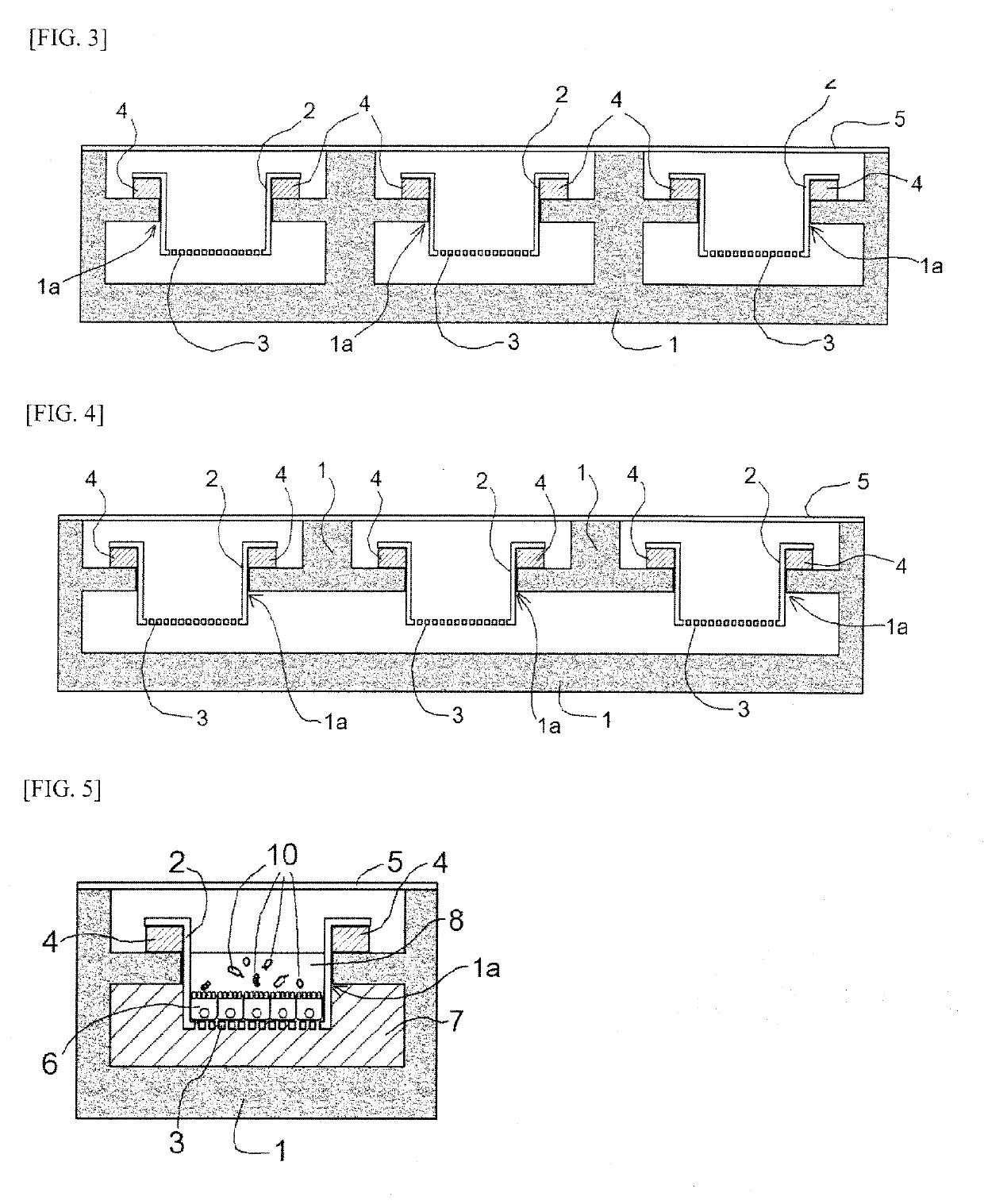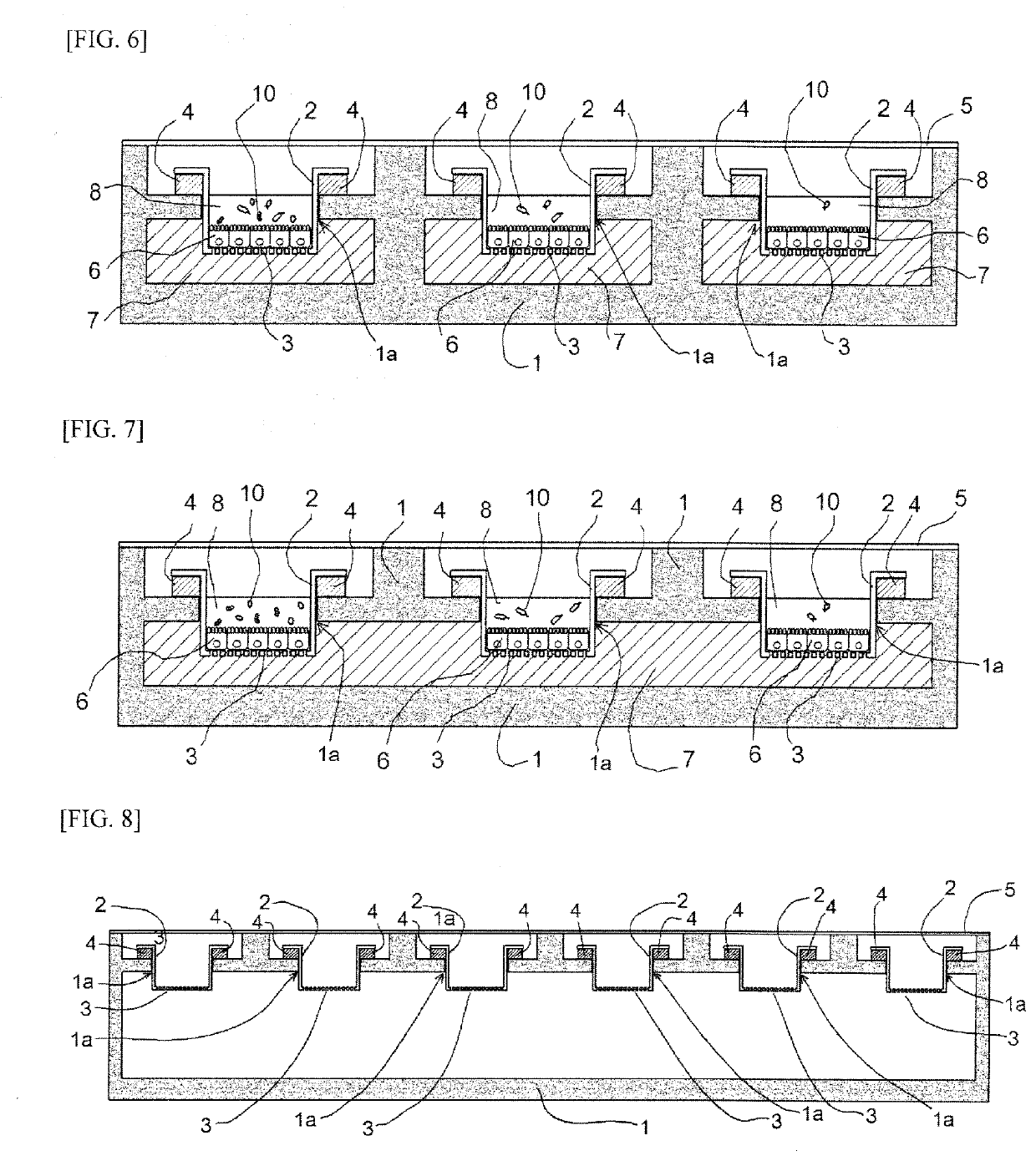Co-Culture Device and Co-Culture Method for Bacterium Such as Anaerobic Bacterium and Epithelial Cells
a technology of anaerobic bacteria and coculture method, which is applied in the field of co-culture device and co-culture method for bacterium such as anaerobic bacteria and epithelial cells, can solve the problems of affecting the physical condition of the host, affecting the survival of the host, and affecting the production of metabolites of enteric bacteria, so as to achieve the effect of simple and easy collection of bacterium, efficient proliferation of bacterium, and enhanced operating efficiency
- Summary
- Abstract
- Description
- Claims
- Application Information
AI Technical Summary
Benefits of technology
Problems solved by technology
Method used
Image
Examples
experimental example 1
[0103]Changes in oxygen concentration were studied by using the culture system (I-GOEMON) for co-culturing of a bacterium (e.g. an anaerobic bacterium) with epithelial cells, which is an embodiment of the present disclosure; and the conventional culture systems under anaerobic conditions (“Anaero”) and under aerobic conditions (“Aero”).
[0104]By the procedure illustrated in FIG. 13, Caco-2 cells were inoculated on the upper surface of the porous membrane disposed in the bottom surface of the cell culture insert, and Caco-2 cells become differentiated and polarized to become a substantially monolayer, and to form tight junctions. Firstly, DMEM (high Glc; 10% FBS+penicillin / streptomycin (hereafter, “P / S”)) was used to inoculate Caco-2 cells at 2×105 cells / well in the cell culture insert of the culture system “I-GOEMON” of the present disclosure. Secondly, the cell culture inserts were set in cell culture dishes. The cells were cultured in CO2 cell culture incubators. DMEM (high Glc; 10...
experimental example 2
[0108]Further, experiments were conducted to evaluate the states of intestinal epithelial cells when cultured using I-GOEMON, an embodiment of the present disclosure.
[0109]The same protocol as that in the above Experimental Example applied to culturing processes in this Example. Specifically, the epithelial cells were inoculated and differentiated to monolayer on the upper surface of the porous membrane disposed in the bottom surface of the cell culture inserts; and the culture systems with the following setting have been used, and each culture tank of the systems included the cell culture insert having the epithelial cell layer thereon: I-GOEMON as an embodiment of the present disclosure; and the conventional culture systems under anaerobic conditions (“Anaero”) and under aerobic conditions (“Aero”), where each of their culture tanks was not sealed. During co-culturing, I-GOEMON and the conventional culture system (“Anaero”) were placed to stand in an anaerobic chamber; on the othe...
experimental example 3
[0115]Further, experiments were conducted to evaluate the state of intestinal epithelial cells when cultured with I-GOEMON for a longer period of 12 days.
[0116]The same protocol as that in Experimental Example 2 applied to culturing processes in this Example. Specifically, the epithelial cells were inoculated and differentiated to monolayer on the upper surface of the porous membrane disposed in the bottom surface of the cell culture inserts; and the culture systems have been used with the following settings, and each culture tank of the systems included the cell culture insert having the epithelial cell layer thereon: I-GOEMON as an embodiment of the present disclosure; and the conventional culture systems under anaerobic conditions (“Anaero”) and under aerobic conditions (“Aero”), with each of their culture tanks not sealed. During co-culturing, I-GOEMON and the conventional culture system (“Anaero”) were placed to stand in an anaerobic chamber; on the other hand, the conventional...
PUM
| Property | Measurement | Unit |
|---|---|---|
| pore size | aaaaa | aaaaa |
| pore size | aaaaa | aaaaa |
| pore size | aaaaa | aaaaa |
Abstract
Description
Claims
Application Information
 Login to View More
Login to View More - R&D
- Intellectual Property
- Life Sciences
- Materials
- Tech Scout
- Unparalleled Data Quality
- Higher Quality Content
- 60% Fewer Hallucinations
Browse by: Latest US Patents, China's latest patents, Technical Efficacy Thesaurus, Application Domain, Technology Topic, Popular Technical Reports.
© 2025 PatSnap. All rights reserved.Legal|Privacy policy|Modern Slavery Act Transparency Statement|Sitemap|About US| Contact US: help@patsnap.com



